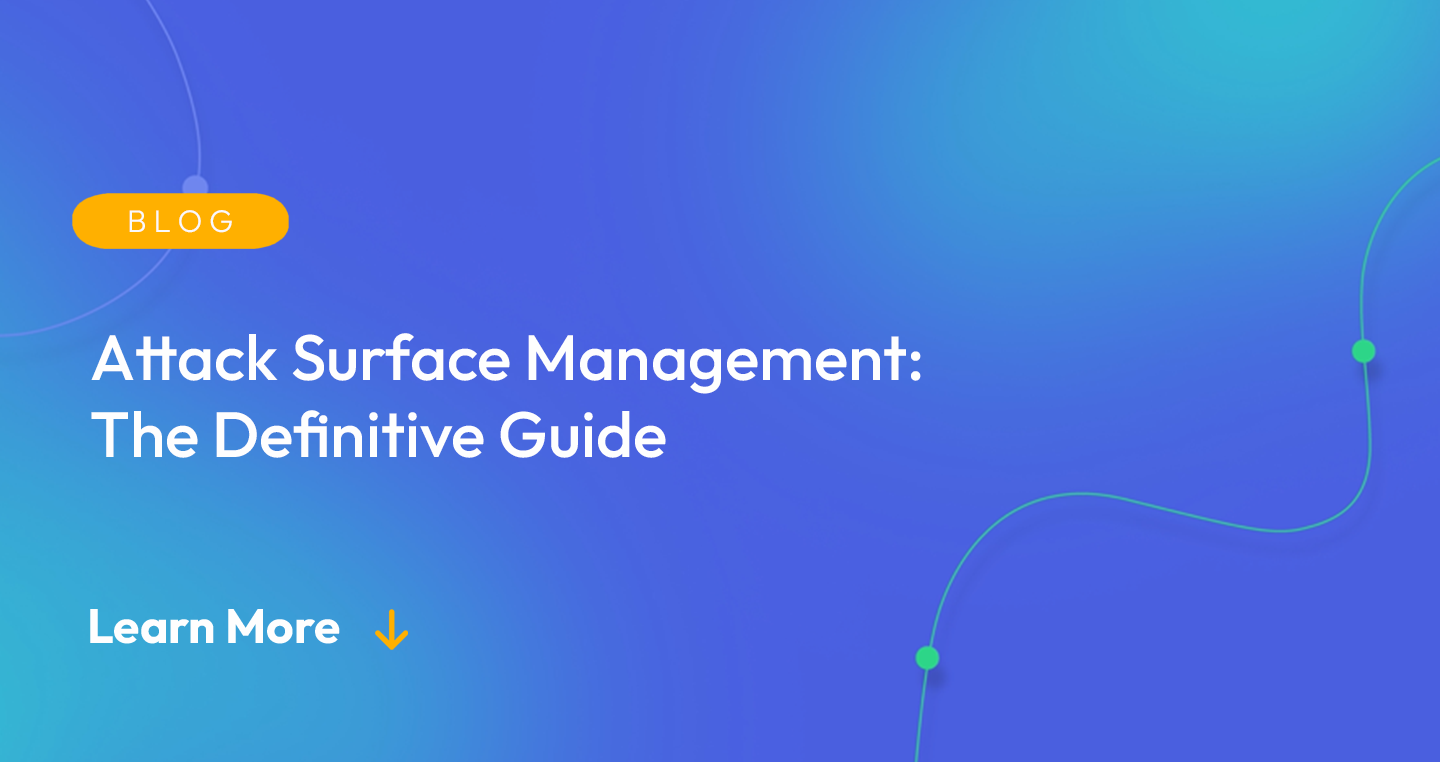
Today’s hybrid IT environments combine on-premises data centers, virtualization, cloud infrastructure, third-party dependencies, and remote workers. Fully aware of the increase in Internet-facing services and assets, threat actors constantly probe for exposures on websites, cloud servers and services, and other Internet-connected systems. Often, these exposed assets get completely forgotten about or overseen, and they present an easy method of entry into your internal network (and sensitive data!).
With a more far-reaching digital footprint than ever, companies struggle to see and control all the potential paths into their IT environments. Attack surface management (ASM) aims to bring essential control and visibility—here’s the definitive guide on ASM, including why you need it, key capabilities that solutions should have, and more.
Why Do You Need Attack Surface Management?
It’s crucial to have a clear understanding of your company’s exposure and susceptibility to cyber attacks in order to prioritize mitigation measures. The difficulty nowadays is that with more external-facing systems and assets than ever, hackers have a huge target area to work with.
There are both physical and digital attack surfaces, but you address physical risks with physical controls, such as locks and swipe cards. Much of the risk and concern around attack surfaces focuses on the digital attack surface, which encompasses all assets and information about your company online that could provide a way into your environment.
Your digital attack surface includes the following:
- Known assets, such as registered domains and subdomains, SSL certificates, servers, etc.
- Unknown assets, including shadow apps used by different departments without IT approval, forgotten about cloud infrastructure, and even orphaned user accounts that remain active despite having no valid user.
- Third-party assets that can access your IT ecosystem, whether this means code implemented on your website from a marketing service or a contractor’s user account.
- Impersonating assets such as fake domains and subdomains that hackers sometimes create to impersonate your brand and then lure unsuspecting customers or business partners in.
Manually tracking all of this data is both time-consuming and destined to fail. Traditional approaches, such as manual inventories and pen testing can’t keep pace with the dynamism and fluidity of modern attack surfaces. Threat actors probe online for exposures constantly, not on an ad hoc basis.
Exemplifying the scale of the problem was an incident in 2019 that saw 1.2 billion records left exposed in an Elasticearch server that was left accessible online without password protection or authentication. More recently, video game maker Sega left customer details open and available in an amazon S3 cloud storage bucket. These incidents demonstrate that without a specific solution and approach, exposures will happen, and they’ll often go under the radar.
Precisely Defining Attack Surface Management
Attack surface management is a dedicated approach that continuously identifies, monitors, and manages all Internet-connected assets (cloud servers, apps, Github repositories) and exposures (such as credentials, open ports) for potential attack vectors and risks. Continuity is key here because you need constant visibility into your digital footprint and Internet-exposed assets to manage cyber risks.
ASM drives understanding of your attack surface and all the ways it’s exposed and vulnerable to attack. The intelligence gleaned from ASM also informs your security teams and helps prioritize the activities that shrink your attack surface, plug the most blatant exposures, and make you less vulnerable to breaches.
Key Capabilities of Attack Surface Management Solutions
With recognition now growing about the importance of attack surface management, a slew of new solutions are available that promise to help you manage your attack surface. Here are some key capabilities to look out for.
1. Digital footprint discovery
Managing your attack surface starts with identifying all Internet-facing assets and exposures. The discovery process should be as automated as possible and continuous. A variety of digital footprint discovery methods is also advisable, including simple scanning of provisioned IP addresses and subnets to more advanced open-source intelligence and scanning of the dark and clear web.
2. Contextual prioritization
Discovering and inventorying your attack surface is likely to generate a lot of data. It’s vital to understand though that not all of this data will come with the same level of risk. That’s why ASM solutions should provide prioritized alerting that cuts through the noise and adds actionable context so that the highest risk exposures can be dealt with first.
3. Continuous monitoring
It’s worth reinforcing the central role of continuous security monitoring in any effective ASM solution. As the state of assets changes, new assets get added to your IT ecosystem, and third-party code becomes vulnerable, you need round-the-clock monitoring that tracks and flags these changes to your risk profile.
4. Seamless integration with existing security workflows
A really important capability not to overlook is how well a potential solution integrates with your existing security workflows. Seamless integration ensures that deploying an ASM solution doesn’t cause bottlenecks in incident response or other orchestrated security tasks. Look for tools that can feed data into your SIEM and SOAR solutions so that security teams can resolve issues swiftly without being hampered by inflexibility.
Attack Surface Management Benefits
Here is a quick run-through of some tangible security benefits you get from comprehensive attack surface management:
- Drives rapid visibility into high-risk external exposures such as expired SSL certificates, leaky cloud buckets, and unnecessary open ports.
- Intelligence from illicit dark web and clear web marketplaces where threat actors may be offering stolen credentials belonging to your users for sale.
- Remediate high-risk vulnerabilities and exposures at the speed required by eliminating noise and allowing security professionals to focus on the riskiest assets.
- Support your remote hybrid workforces while minimizing the security concerns and risks around external access to internal systems.
- Get the visibility you need into shadow IT assets that your security teams don’t even know exist but that could pose huge risks to your systems and data.
- Attack surface management helps to minimize the risk of data breaches by proactively identifying and mitigating potential attack vectors.
- Customers and stakeholders are more likely to trust your company if you demonstrate a commitment to securing all facets of your digital infrastructure.
Get Modern Attack Surface Management with Flare
Flare provides a real-time view of your external risks and helps you proactively remediate digital risks. Flare’s platform works behind a single pane of glass to simplify attack surface management and eliminate noise through context-rich alerts about misconfigurations, data leaks, and other high-risk exposures. You also get in-depth monitoring of anonymous file-sharing websites and illicit dark web marketplaces for unrivaled visibility into current or impending threats targeting weak links in your attack surface.





